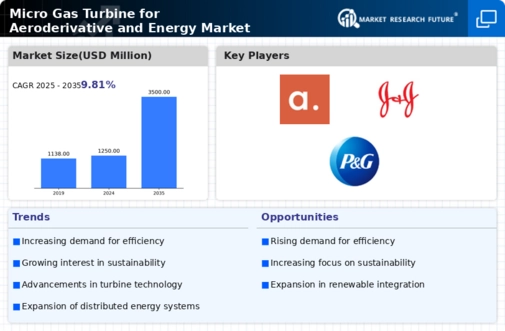Rising Global Electricity Demand
Due to the growth of major economies, the rising global electricity demand is significantly increasing the demand for micro gas turbines for power generation and various other purposes. Once countries develop and urbanize, how to provide reliable, efficient, and flexible power comes to a head. Such a big trend is particularly pronounced in emerging economies where rapid industrialization and urbanization put enormous pressure on existing power infrastructure, frequently resulting in power outages of unknown duration and no guarantees of the actual voltage.
Micro gas turbines are small, highly efficient, and can be operated independently of the central grid. They are a good choice for businesses, industries, and communities interested in providing their power base. This feature is particularly true in places where the central grid is underdeveloped or prone to frequent failure. These turbines can be set up rapidly and modularly, making them suitable for urban centers and regions remote from the main power grid. Their flexibility and scalability range from small-scale residential use to large industrial complexes.
Several factors drive the increasing worldwide demand for electricity. These include population growth, economic expansion, and a rapidly growing collection of electronic devices and appliances. From the perspective of modern civilization, increase in living standards usually means higher power requirements for home, commercial and industrial use. In many developing countries, where markets are small but expanding rapidly through the growth of manufacturing industries and services, this multiplies the need for uninterrupted power supplies. To this end, micro gas turbines which supply consistent power with little downtime are most appropriate.
The adoption of this hybrid approach increases overall reliability and efficiency (i.e. reliability is increased while efficiency is not lost). This structure makes the system more robust in the face of fluctuations in generation and demand for heat, power, etc. In addition, technological innovations have also been crucial in stimulating the development of micro gas turbines.
Recent advances in material science, manufacturing process and turbine design have greatly improved these systems' efficiency, durability and emission performance. For example, advanced materials such as ceramics and high-temperature alloys permit micro gas turbines to work at higher temperatures. This innovation in turn increases their thermal efficiency and reduces fuel consumption. In addition, advances in combustion technology have meant that the emissions of pollutants such as nitrogen oxides (NOx) and carbon dioxide (CO2) from micro gas turbines are smaller than before--thus making them environmentally friendly options for power generation.
Programs like Horizon Europe and the European Structural and Investment Funds (SIF) provide grants and other fiscal assistance to help fund research projects into cleaner energy forms and better energy conservation technologies.
China, India and Japan are all encouraging the promotion of micro-gas turbines. For instance, China has included micro-gas turbines in its national plans for distributed energy systems and smart grids. The Chinese government provides subsidies and tax incentives to promote these technologies, particularly in industrial parks and rural areas. Under its National Action Plan on Climate Change, India has launched a range of initiatives to support clean energy projects, including micro gas turbines. Focusing on energy security and resilience, Japan provides financial incentives and subsidies for deploying micro gas turbines - especially in areas subject to natural disasters.
Finally, propelled by the expansion of major economies, the world's surging demand for electric power is throwing a lifeline of opportunity to provide power generation and more to micro-gas turbines. Whether in power plants, manufacturing or anywhere else, these turbines offer a versatile, efficient and dependable solution. Technological advances and government policies that favor using micro-gas turbines also increase acceptance. It can offer the always-on features needed in today's power market.
The ongoing transition towards decentralized energy systems and the increasing demand for sustainable power generation solutions appear to be driving the growth of micro gas turbines in various sectors.
U.S. Department of Energy














Leave a Comment